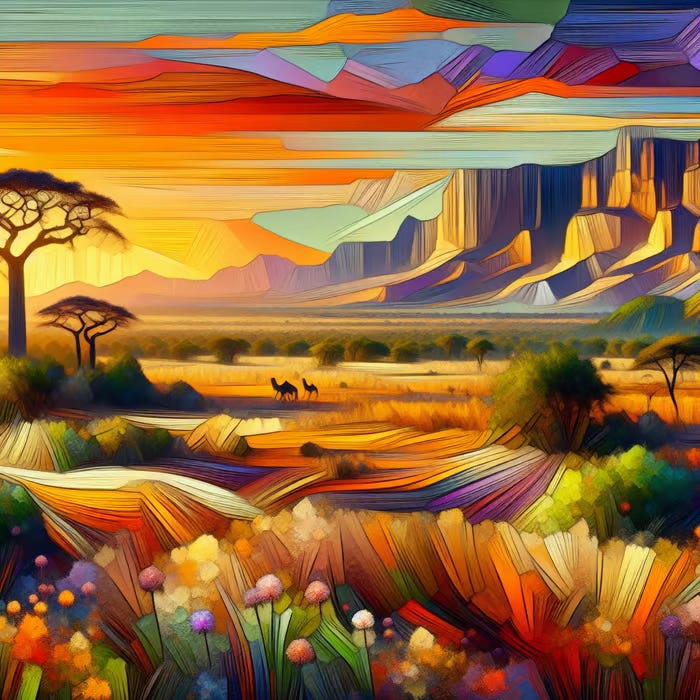Neural Colonialism: Are Western AI Models Erasing African Artistic Identities?

African art is vibrant, emotional, and deeply personal. Every brushstroke tells a story. Every design is a memory. But now, powerful AI models—mostly built in the West—are trying to “recreate” that magic. And here's the problem: they’re doing it badly.
These AI systems are trained mostly on Western data. They often miss the soul of African creativity. They simplify it. They generalise it. Sometimes, they get it completely wrong. Imagine an AI trying to draw a Maasai warrior—and giving him cowboy boots. That’s not art. That’s erasure.
Welcome to neural colonialism. It's a new kind of colonisation—only now, it's digital. Instead of land, it's identity. Instead of soldiers, it’s algorithms. If we don’t fix it, these machines will keep rewriting Africa’s stories with someone else’s pen.
In this digest, we will take a deep dive into neural colonialism, exploring the bias, artists, ethical AI and the fight back.
What is Neural Colonialism?
Neural colonialism refers to AI using biased data. Most datasets are Western-heavy AI models that learn stereotypes from Western realities. They simplify Africa into clichés. The richness of tribal patterns, textures, and rituals vanishes.
The New Face of Old Problems
The reality is, most AI models and systems were never built with Africa in mind. They were built by Western developers, using mostly Western data. So, when asked to generate “African” content, what do they do? They guess. And in most cases, they guess wrong.
These models mash together images of safari scenes, tribal masks, and savannah sunsets. It’s a one-dimensional fantasy. The real Africa—urban art, local dialects, handmade textiles—doesn’t make the cut. AI is supposed to innovate, not imitate old colonial narratives or narratives that don’t even describe the beautiful continent of Africa.
The Bias is Baked In
Many of these models are trained on open internet data, like stock photos or Wikipedia images. And guess what? Those images rarely show African people as innovators or artists. Instead, they show poverty, struggle, and outdated tropes.
Researchers at Wired and Insider Africa found that AI often generates images of African workers as barefoot farmers or struggling refugees, even when the prompt doesn’t ask for it. Not only is this biased; that's a misrepresentation.
Real Artists Are Getting Burned
Senegalese artist Linda Dounia Rebeiz had previously expressed shock when she typed "buildings in Dakar" into DALL·E and was served an unrecognisable result of “squat, decrepit low-rises covered in dirt and peeling paint”. The vibrant, bustling urban landscape she knows was completely missing. Worse? Artists have no say when their work is scrapped to train these models. That’s like a museum stealing your painting—and you are never given credit.
It’s not just cultural theft. It’s economic, too. AI-generated art floods markets. Real artists struggle to compete with cheap imitations of their own work.
The Fightback: Africa Builds Its Own AI
Not all hope is lost. Across Africa, innovators are rising. In Uganda, Sunbird AI is building local-language models. In South Africa, Lelapa AI focuses on community-first tech. These startups are developing ethical tools—by Africans, for Africa.
Artists like Linda Dounia are challenging AI bias by creating their own datasets and visuals that reflect authentic African aesthetics—drawing inspiration from local architecture, natural landscapes, and culturally rooted symbolism. These aren’t just tools—they’re acts of resistance.
What Ethical AI Should Look Like
Ethical AI isn’t just a buzzword. It’s the difference between ownership and exploitation. Researchers call for models trained on culturally-verified data. They advocate for local data rights, informed consent, and fair compensation.
In summary: AI should help African art thrive, not whitewash it.
Western AI models are painting Africa with the wrong brush. They flatten complexity, distort identities, and silence real voices. But Africa is pushing back—with code, with culture, and with community.
If the future of art is digital, it must be just. Let AI amplify African creativity, not erase it. Let’s not repeat colonial mistakes—especially in pixels.






